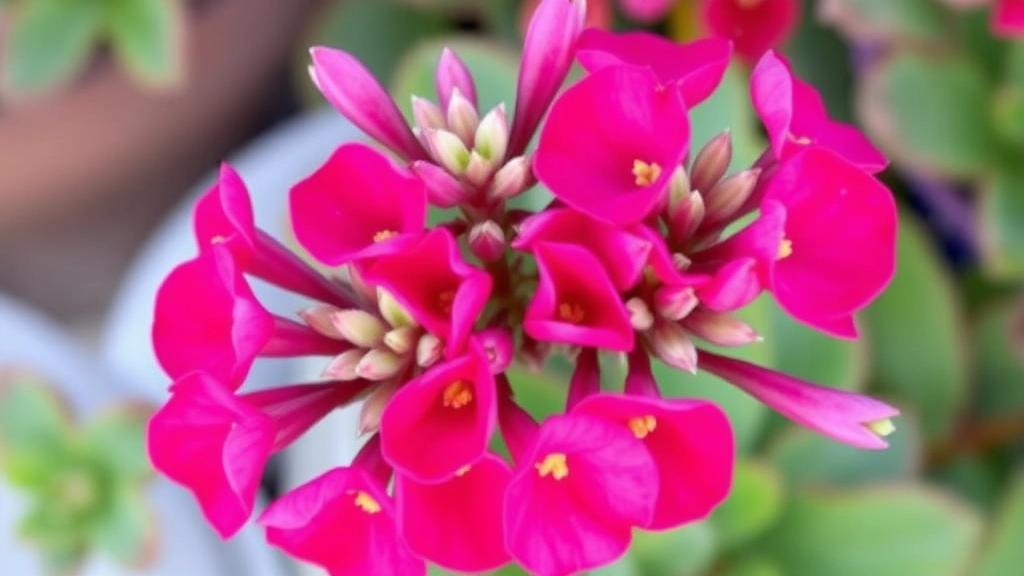Kalanchoe Panamensis: A Unique Succulent
If you’re looking to add a unique and vibrant succulent to your collection, Kalanchoe Panamensis, also known as Kalanchoe Marnieriana, is a fantastic choice. This plant is renowned for its striking blue-green leaves with red tips, especially during the winter months. Let’s dive into the essentials of caring for this stunning succulent, ensuring it thrives in your home or garden.
Ideal Conditions for Kalanchoe Panamensis
First, let’s talk about the ideal conditions for Kalanchoe Panamensis. This plant loves bright, indirect sunlight and can tolerate some direct sun, making it perfect for a sunny windowsill. It thrives in well-draining soil, so a cactus or succulent mix is ideal. Watering should be done sparingly; allow the soil to dry out completely between waterings to prevent root rot. With the right care, your Kalanchoe Marnieriana will reward you with its unique beauty and resilience.
Characteristics of Kalanchoe Panamensis
When considering the unique features of Kalanchoe Panamensis, many plant enthusiasts find themselves intrigued by its striking appearance and adaptability.
Kalanchoe Panamensis is a succulent that stands out due to its distinct characteristics:
- Foliage: The leaves are thick, fleshy, and often exhibit a vibrant green hue. They can sometimes have a slight reddish tint at the edges, adding to their visual appeal.
- Growth Habit: This plant typically grows upright, reaching heights of up to 1 metre. Its compact nature makes it suitable for various indoor and outdoor settings.
- Flowers: Kalanchoe Panamensis produces clusters of small, tubular flowers that can vary in colour, ranging from pale pink to bright orange. These blooms often attract pollinators, enhancing its garden value.
- Hardiness: This succulent is known for its resilience, able to withstand periods of drought. It thrives in well-draining soil and can adapt to different environmental conditions.
Understanding these characteristics not only helps in appreciating its beauty but also in ensuring its proper care. For more detailed care tips, you might find our ultimate guide to growing and caring for succulent plant Kalanchoe useful. Additionally, if you’re interested in exploring other Kalanchoe varieties, check out our comprehensive Kalanchoe species list for gardeners.
Growth Requirements for Kalanchoe Marnieriana
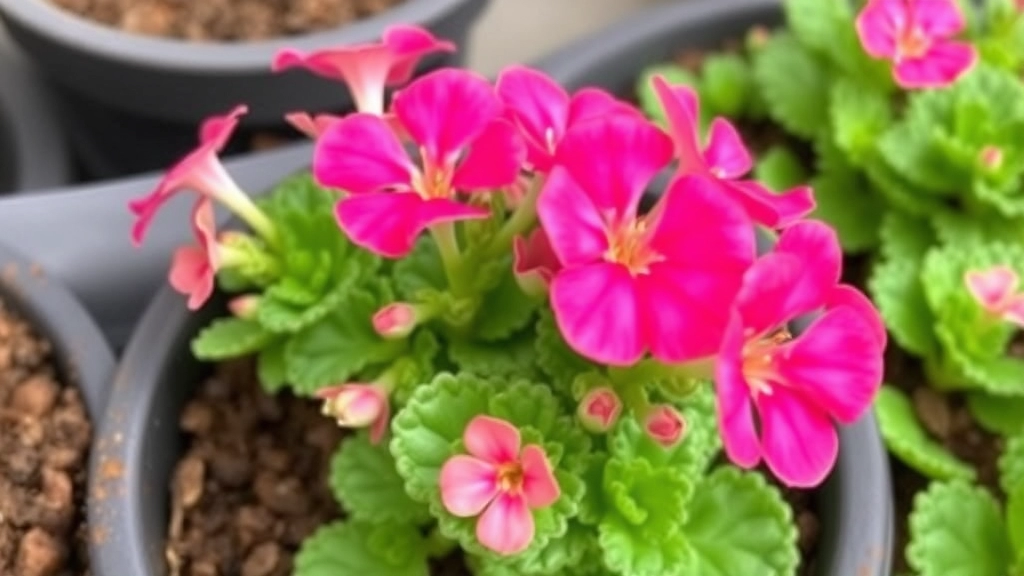
So, you’re ready to dive into the world of Kalanchoe Marnieriana? Great choice! This lovely succulent is not just a treat for the eyes; it’s also pretty easy to care for. But to thrive, it does have some specific growth requirements that you need to keep in mind.
Light
- Bright, Indirect Light: Kalanchoe Marnieriana loves bright light but can’t handle direct sunlight for too long. Think of it as a sunbather who prefers a bit of shade now and then.
- Rotate Regularly: If you notice it leaning towards the light, give it a gentle twist every now and then. This helps it grow evenly.
Temperature
- Ideal Range: This plant enjoys a warm environment, ideally between 18°C to 24°C (65°F to 75°F).
- Avoid Cold Drafts: Keep it away from chilly windows or doors. Sudden temperature drops can make it sulk.
Humidity
- Low Humidity: Kalanchoe Marnieriana thrives in low humidity, making it perfect for indoor spaces.
- Air Circulation: Ensure there’s good airflow around your plant. This keeps it happy and healthy.
Space
- Room to Grow: Give it some space! These plants can spread out, so don’t crowd them with other plants.
- Pot Size: Choosing the right pot size is crucial. A pot that’s too big can hold excess moisture, which isn’t good for the roots.
Ideal Light and Temperature Conditions
When considering the care for Kalanchoe Marnieriana, one of the most pressing questions is about its light and temperature needs.
Light Requirements
Kalanchoe Marnieriana thrives in bright, indirect sunlight.
- Optimal Exposure: Aim for 6 to 8 hours of light daily.
- Avoid Direct Sunlight: Too much direct sunlight can scorch the leaves.
- Indoor Placement: A south or west-facing window is ideal for indoor plants.
If you’re noticing leggy growth, it may be a sign that your plant isn’t getting enough light. For more detailed information, check out this guide on growing and caring for flowering Kalanchoe Blossfeldiana.
Temperature Preferences
Temperature plays a crucial role in the health of your Kalanchoe Marnieriana.
- Ideal Range: Keep temperatures between 18°C and 24°C (65°F to 75°F).
- Cold Sensitivity: Avoid exposing your plant to temperatures below 10°C (50°F).
- Draft Protection: Ensure it’s not placed near drafts or heating vents.
A stable environment is key; fluctuations can stress the plant, leading to poor growth or health issues. For additional care tips, you might find this guide on maximizing the longevity of Kalanchoe plants helpful.
Soil and Watering Best Practices
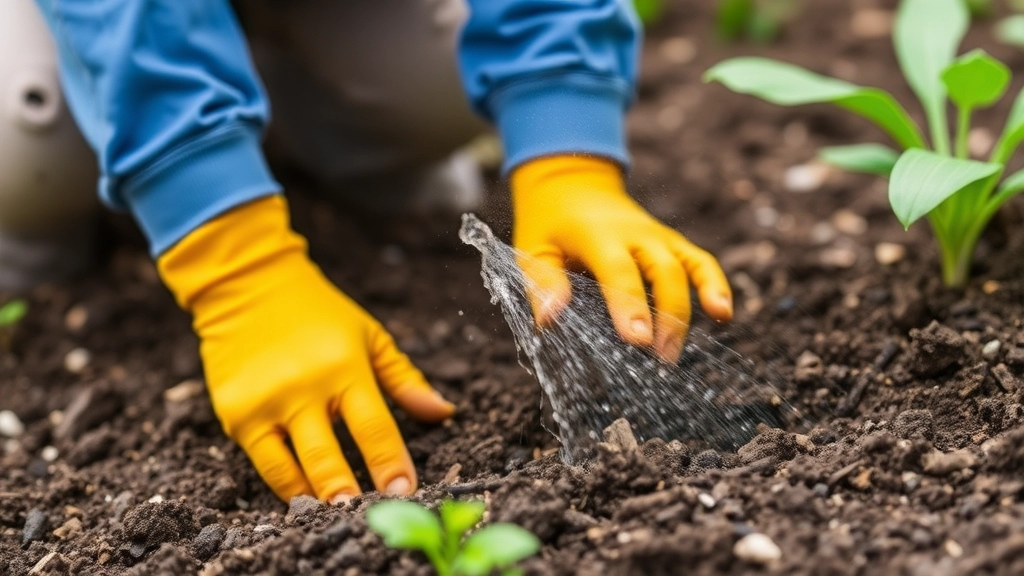
When it comes to caring for Kalanchoe Marnieriana, understanding the right soil and watering techniques is crucial for promoting healthy growth. You might be wondering, “What type of soil is best?” or “How often should I water my Kalanchoe?” These are common concerns that can significantly impact the plant’s health.
Soil Requirements
Kalanchoe Marnieriana thrives in well-draining soil. Here are some key points to keep in mind:
- Cactus Mix: A pre-packaged cactus or succulent mix works wonders.
- DIY Mix: Alternatively, you can create your own by combining:
- 2 parts potting soil
- 1 part perlite
- 1 part sand
This combination ensures good aeration and prevents water retention, which can lead to root rot.
Watering Best Practices
Watering is another critical aspect. Overwatering is a common mistake that many plant enthusiasts make. Here’s how to get it right:
- Frequency: Water your Kalanchoe when the top inch of soil feels dry. This usually translates to every 2-3 weeks, but it can vary based on your environment.
- Method: Water thoroughly until it drains from the bottom of the pot. Avoid letting the plant sit in water.
- Seasonal Adjustments: Reduce watering during the winter months when the plant is dormant.
By following these soil and watering best practices, you can create an optimal environment for your Kalanchoe Marnieriana.
As we delve deeper into the care of Kalanchoe Marnieriana, understanding its fertilization and nutrient needs is crucial for optimal growth and vibrant foliage.
### Why Fertilization Matters
Are you wondering why your Kalanchoe isn’t thriving as you’d hoped? Nutrient deficiencies can often be the culprit.
Kalanchoe Marnieriana thrives when provided with the right balance of nutrients.
### Choosing the Right Fertilizer
– **Type**: A balanced, water-soluble fertiliser, such as a 20-20-20 NPK formula, is ideal.
– **Frequency**: Fertilise every 4-6 weeks during the growing season (spring and summer).
– **Dilution**: Always dilute the fertiliser to half the recommended strength to avoid root burn.
### Nutrient Focus
– **Nitrogen (N)**: Promotes lush, green growth.
– **Phosphorus (P)**: Supports root development and flowering.
– **Potassium (K)**: Enhances overall plant health and resistance to disease.
### Signs of Nutrient Deficiency
Keep an eye out for these signs:
– Yellowing leaves may indicate nitrogen deficiency.
– Stunted growth can signal a lack of phosphorus.
– Weak stems might suggest insufficient potassium.
### Seasonal Adjustments
During the dormant months (autumn and winter), reduce or eliminate fertilization. The plant’s nutrient needs decrease significantly, and over-fertilising can lead to issues.
Common Issues and How to Avoid Them

Let’s get real for a moment.
When it comes to caring for Kalanchoe Marnieriana, there are a few hiccups that can pop up, leaving you scratching your head.
But don’t worry; I’ve got your back. Here are some common issues and how to sidestep them:
1. Overwatering
- Symptoms: Yellowing leaves, mushy stems.
- Prevention: Always allow the soil to dry out between waterings. Stick your finger in the soil; if it feels dry an inch down, it’s time to water.
2. Underwatering
- Symptoms: Droopy leaves, shrivelling.
- Prevention: Keep an eye on the moisture level. If the leaves start to look sad, give it a good drink.
3. Pest Problems
- Common Pests: Mealybugs, aphids.
- Prevention: Regularly check the undersides of leaves. If you spot any pests, a gentle wipe with a damp cloth or a spray of insecticidal soap should do the trick.
4. Poor Light Conditions
- Symptoms: Stretching stems, pale leaves.
- Prevention: Make sure your Kalanchoe is getting bright, indirect sunlight. If it looks like it’s reaching for the light, it’s time to move it closer to a window.
5. Temperature Extremes
- Symptoms: Leaf drop, wilting.
- Prevention: Keep your plant in a stable environment. Ideally, it likes temperatures between 15°C and 25°C. Avoid placing it near drafts or heating vents.
6. Nutrient Deficiency
- Symptoms: Slow growth, discolouration.
- Prevention: Feed your Kalanchoe with a balanced succulent fertilizer during the growing season, but don’t overdo it. Less is more!
Pruning and Maintenance Tips for Kalanchoe Marnieriana
Maintaining the health and appearance of your Kalanchoe Marnieriana is essential for its growth and flowering. You may wonder how to keep your plant looking its best while ensuring it thrives.
Propagation Methods (Seed and Stem Cuttings)
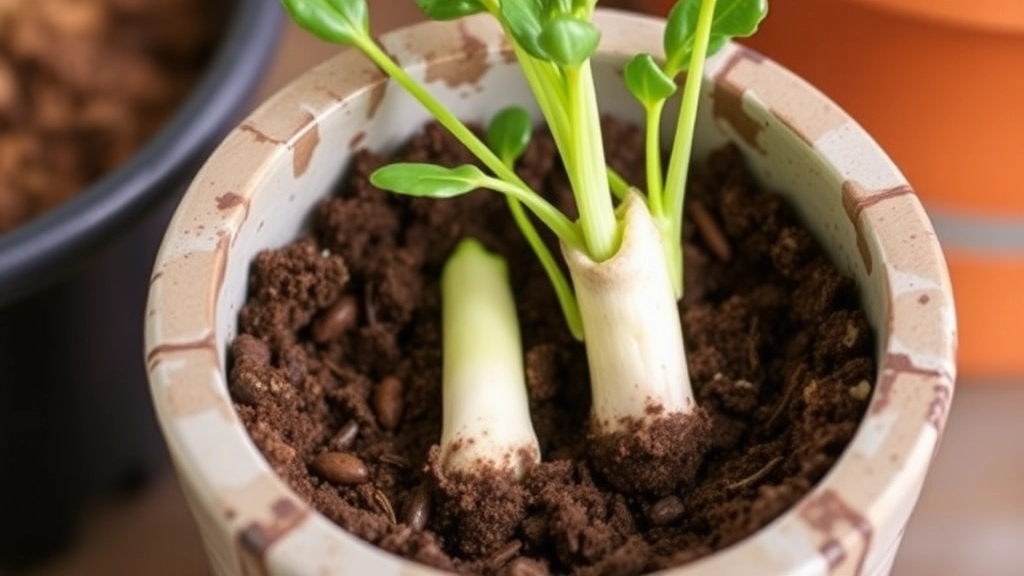
So, you’re keen on multiplying your Kalanchoe Marnieriana? Good choice! Propagation is not just rewarding; it’s a fun way to expand your plant family without breaking the bank.
Seed Propagation
Starting from seeds can feel a bit daunting, but it’s really not that bad. Here’s how to get going:
- Gather Seeds: If you have a flowering Kalanchoe, collect seeds from the blossoms.
- Prep Your Soil: Use a light, well-draining seed mix. A mix of perlite and potting soil works wonders.
- Sow Seeds: Sprinkle seeds on the surface of the soil, don’t bury them too deep—just a light dusting will do.
- Water Gently: Use a spray bottle to moisten the soil without washing away the seeds.
- Cover and Wait: Place a plastic cover over the pot to maintain humidity. Keep it in a warm spot.
Typically, germination takes a couple of weeks. Just keep an eye on moisture levels!
Stem Cuttings
If you’re looking for a quicker route, stem cuttings are your best bet. Here’s how to do it right:
- Select a Healthy Stem: Look for a robust stem, ideally 3-4 inches long with a few leaves.
- Cut and Dry: Cut the stem just below a leaf node. Let it dry for a day or two to form a callus. This helps prevent rot.
- Plant the Cutting: Place the cutting in a small pot with well-draining soil. Bury it about an inch deep.
- Water Sparingly: Just a light watering to settle it in, then keep the soil slightly moist but not soggy.
- Provide Warmth: Keep it in a warm, bright spot, but out of direct sunlight until you see new growth.
In no time, you’ll have new plants ready to go!
Companion Plants for Kalanchoe Marnieriana
When considering the best companions for Kalanchoe Marnieriana, it’s essential to think about the plant’s specific needs and characteristics. Pairing it with the right plants can enhance both aesthetics and health.
Seasonal Flowering and Its Care
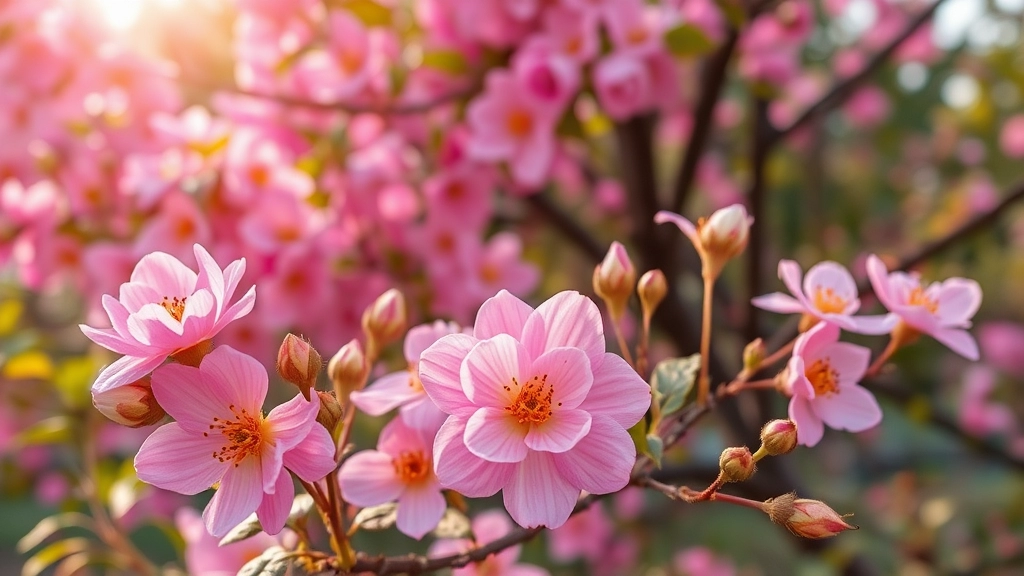
Are you excited about the vibrant blooms of your Kalanchoe Marnieriana? I get it—there’s nothing quite like watching your plant burst into colour. But how do you ensure those flowers thrive?
Flowering Season
Kalanchoe Marnieriana typically flowers in late winter to early spring. During this time, you’ll notice clusters of small, tubular flowers that can really brighten up your space.
Care Tips for Seasonal Blooms
To make the most of this blooming period, consider these simple care tips:
- Light: Ensure your plant gets plenty of bright, indirect sunlight. This helps promote healthy blooms.
- Watering: Keep the soil slightly moist but not soggy. Overwatering can lead to root rot, which is a real buzzkill for flowering.
- Temperature: Aim for a comfortable range between 15°C to 25°C. Sudden temperature changes can stress your plant.
- Fertilization: A balanced, water-soluble fertiliser can encourage flowering. Apply it every 4-6 weeks during the growing season.
Post-Bloom Care
Once the flowers fade, don’t be too quick to prune. Allow the plant to rest and gather energy for the next blooming cycle.
- Cut Back: After the blooming period, trim away dead flowers and any leggy growth to keep your plant looking tidy.
- Reduce Watering: Scale back on watering slightly during the dormant phase to prevent over-saturation.
Preparing for the Next Bloom
As the seasons change, keep an eye on your Kalanchoe.
- Monitor Light: Adjust its placement if necessary to ensure it gets enough light as days get shorter.
- Check Soil: Refresh the soil if it looks depleted, as this can help with nutrient uptake for future blooms.
When it comes to positioning your Kalanchoe Marnieriana, the right placement can make all the difference in its growth and overall health. You may be wondering whether to keep your plant indoors, outdoors, or perhaps in a combination of both environments.
### Indoor Placement
– **Light Requirements**: Kalanchoe Marnieriana thrives in bright, indirect light. Place it near a south or west-facing window to ensure it receives ample sunlight.
– **Temperature**: Ideal indoor temperatures range from 18°C to 24°C. Avoid locations near drafts or heating vents for optimal growth.
– **Humidity**: This plant prefers moderate humidity. If your home tends to be dry, consider using a humidity tray or misting occasionally.
### Outdoor Placement
– **Sunlight**: If you opt for outdoor placement, ensure your Kalanchoe receives at least 6 hours of sunlight daily. Morning sun with afternoon shade is ideal.
– **Temperature**: Kalanchoe Marnieriana is sensitive to frost. If you live in a colder climate, bring it indoors when temperatures drop below 10°C.
– **Wind Protection**: Consider placing your plant in a sheltered area to protect it from strong winds, which can damage its leaves.
### Transitioning Between Environments
– **Acclimatization**: If you plan to move your plant from indoors to outdoors (or vice versa), gradually acclimatize it over a week. This helps prevent shock.
– **Monitoring**: Keep an eye on your plant during this transition. Look for signs of stress, such as wilting or leaf drop. For more detailed information on how to plant Kalanchoe, check out our [step-by-step guide](https://planthq.org/how-to-plant-kalanchoe-stepbystep-guide/).
If you’re interested in exploring more about different Kalanchoe species, our [species identification guide](https://planthq.org/kalanchoe-species-identification-guide-key-features-tips/) can be a valuable resource.
FAQs on Kalanchoe Panamensis and Kalanchoe Marnieriana
What are the light requirements for Kalanchoe Marnieriana?
Kalanchoe Marnieriana thrives in bright, indirect light. It’s important to rotate the plant regularly to ensure even growth.
What temperature range is ideal for Kalanchoe Marnieriana?
The ideal temperature range is between 18°C to 24°C (65°F to 75°F). Avoid exposing the plant to cold drafts or sudden temperature changes.
How much humidity does Kalanchoe Marnieriana need?
Kalanchoe Marnieriana prefers low humidity and good air circulation. It’s well-suited for indoor environments.
What type of soil is best for Kalanchoe Marnieriana?
Well-draining soil is crucial. A pre-packaged cactus or succulent mix is ideal, or you can create your own mix with 2 parts potting soil, 1 part perlite, and 1 part sand.
How often should I water my Kalanchoe Marnieriana?
Water the plant when the top inch of soil feels dry, usually every 2-3 weeks. Be sure to water thoroughly until it drains from the bottom of the pot.
What are common issues with Kalanchoe Marnieriana and how can I avoid them?
Common issues include overwatering, underwatering, pest problems, poor light conditions, temperature extremes, and nutrient deficiency. Each issue can be managed with proper care and attention to the plant’s needs.
How can I propagate Kalanchoe Marnieriana?
You can propagate Kalanchoe Marnieriana through seed propagation or stem cuttings. Both methods are effective, but stem cuttings are quicker and easier.
When does Kalanchoe Marnieriana flower, and how should I care for it during this time?
Kalanchoe Marnieriana typically flowers in late winter to early spring. During this period, ensure it gets plenty of bright, indirect sunlight, keep the soil slightly moist, and maintain a comfortable temperature range between 15°C to 25°C.
What should I do after the flowering period of Kalanchoe Marnieriana?
After the blooming period, trim away dead flowers and any leggy growth. Reduce watering slightly and prepare the plant for the next bloom by monitoring light and refreshing the soil if necessary.
References
-
How to Grow Kalanchoe
-
Kalanchoe Plant Care Guide
-
Kalanchoe Marnieriana Care Guide
